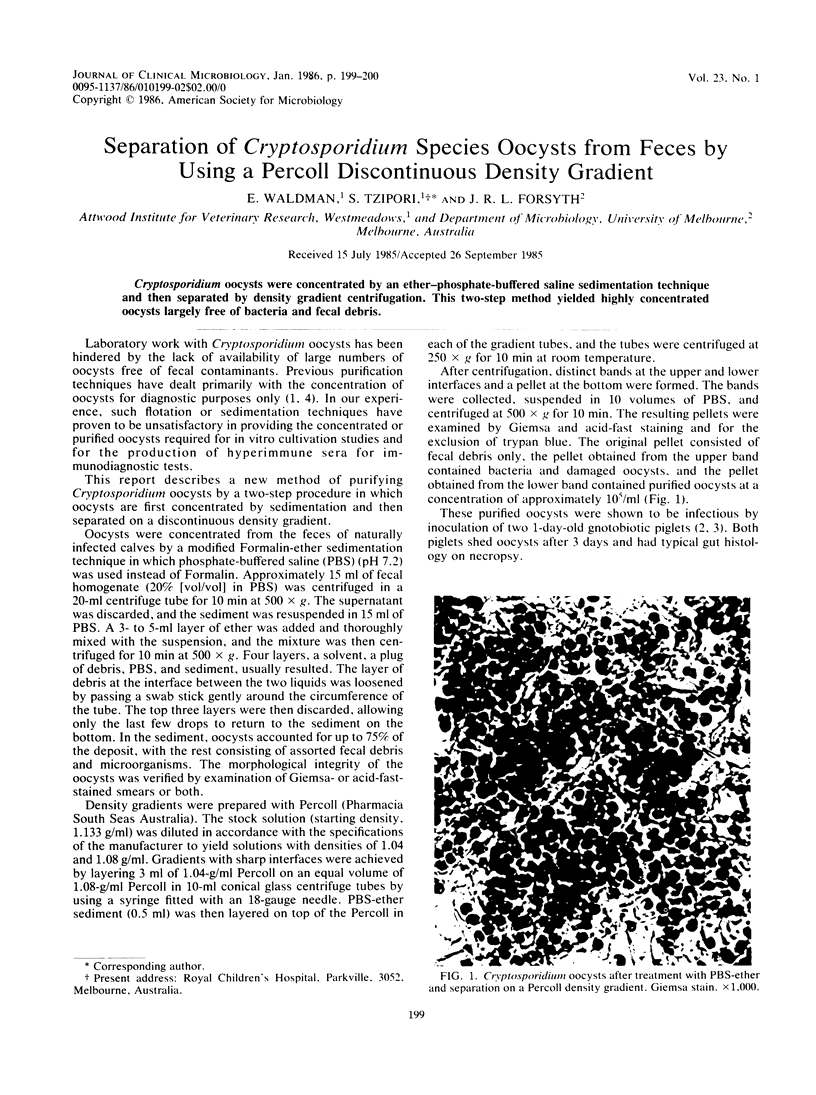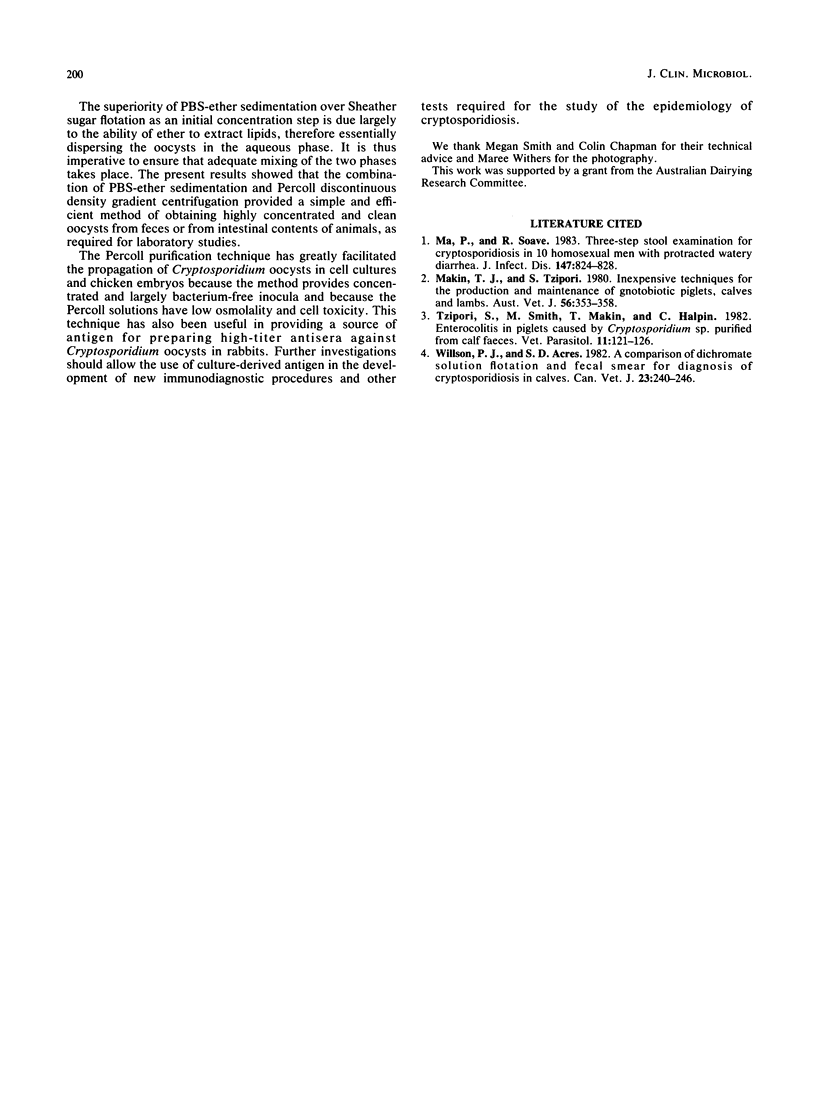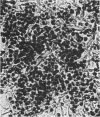Abstract
Cryptosporidium oocysts were concentrated by an ether-phosphate-buffered saline sedimentation technique and then separated by density gradient centrifugation. This two-step method yielded highly concentrated oocysts largely free of bacteria and fecal debris.
Full text
PDF

Images in this article
Selected References
These references are in PubMed. This may not be the complete list of references from this article.
- Ma P., Soave R. Three-step stool examination for cryptosporidiosis in 10 homosexual men with protracted watery diarrhea. J Infect Dis. 1983 May;147(5):824–828. doi: 10.1093/infdis/147.5.824. [DOI] [PubMed] [Google Scholar]
- Makin T. J., Tzipori S. Inexpensive techniques for the production and maintenance of gnotobiotic piglets, calves and lambs. Aust Vet J. 1980 Aug;56(8):353–358. doi: 10.1111/j.1751-0813.1980.tb09558.x. [DOI] [PubMed] [Google Scholar]
- Tzipori S., Smith M., Makin T., Halpin C. Enterocolitis in piglets caused by Cryptosporidium sp. purified from calf faeces. Vet Parasitol. 1982 Nov;11(2-3):121–126. doi: 10.1016/0304-4017(82)90033-4. [DOI] [PubMed] [Google Scholar]
- Willson P. J., Acres S. D. A comparison of dichromate solution floatation and fecal smears for diagnosis of cryptosporidiosis in calves. Can Vet J. 1982 Aug;23(8):240–246. [PMC free article] [PubMed] [Google Scholar]



